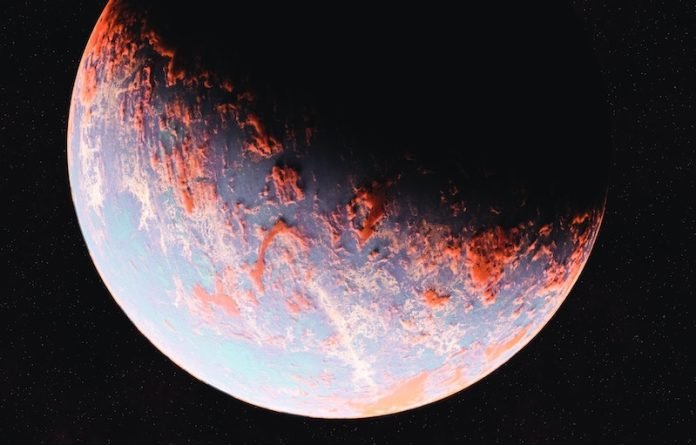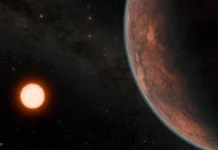
Discovery of TOI-244 b
An international team of astronomers has detected a new “super-Earth” exoplanet, designated TOI-244 b, using NASA’s Transiting Exoplanet Survey Satellite (TESS).
This newly discovered exoplanet stands out due to its unusually low density.
TESS is surveying approximately 200,000 of the brightest stars near the sun in search of transiting exoplanets.
It has so far identified nearly 6,600 candidate exoplanets (TESS Objects of Interest, or TOI), 331 of which have been confirmed.
Astronomers led by Amadeo Castro-González of the Spanish Astrobiology Center in Madrid, Spain, confirmed another TOI that was monitored by TESS.
A transit signal was detected in the light curve of TOI-244 (also known as GJ 1018), a nearby bright, early type M-dwarf star of spectral type M2.5 V, which is almost half the size and mass of the sun.
The planetary nature of this signal was confirmed by radial velocity measurements conducted with the ESPRESSO spectrograph at the European Southern Observatory’s Very Large Telescope (VLT) in Chile.
Characteristics of TOI-244 b
TOI-244 b has a radius of 1.52 Earth radii and a mass of about 2.68 Earth masses, yielding a density of 4.2 g/cm3.
The planet orbits its host every 7.4 days, at a distance of about 0.056 AU from it, and its equilibrium temperature is estimated to be approximately 458 K.
The term “super-Earth” is used to describe planets more massive than Earth but smaller than Neptune, as well as those larger than Earth but smaller than “mini-Neptunes.” TOI-244 b fits within these parameters.
The researchers suggest that TOI-244 b is composed of iron and silicates in a proportion similar to that of Earth.
However, its density is lower than that of most super-Earths of its size, and below what would be expected for an Earth-like composition.
The low density of TOI-244 b may be due to the presence of a significant amount of volatile elements.
Future Studies
The researchers believe that atmospheric loss processes might have efficiently removed a potential primordial hydrogen envelope from TOI-244 b, but high mean molecular weight volatiles such as water could have been retained.
They concluded that TOI-244 b is an excellent target for future atmospheric studies, given its unusual properties and the likely presence of an extended atmosphere.
The findings were reported in a paper published on May 8 on the arXiv preprint server.
More about TESS
TESS, short for the Transiting Exoplanet Survey Satellite, is a space telescope launched by NASA on April 18, 2018, with the specific mission to discover exoplanets around the brightest stars in the sky.
Exoplanets are planets that orbit stars outside our own solar system. TESS uses the transit method to find these exoplanets.
The transit method involves observing a star’s tiny drop in brightness that happens when an orbiting planet crosses in front of it or “transits” the star.
TESS is designed to scan an area of the sky that is 400 times larger than what was observed by the Kepler mission.
While Kepler focused on distant stars in a small patch of the sky, TESS targets stars much closer to Earth and covers a much larger portion of the sky.
The main objective of TESS is to catalogue thousands of exoplanet candidates for further study. The ultimate goal is to measure the masses, sizes, and atmospheres of a large sample of small planets, including a sample of rocky planets in the habitable zones of their host stars.
Copyright © 2023 Knowridge Science Report. All rights reserved.



